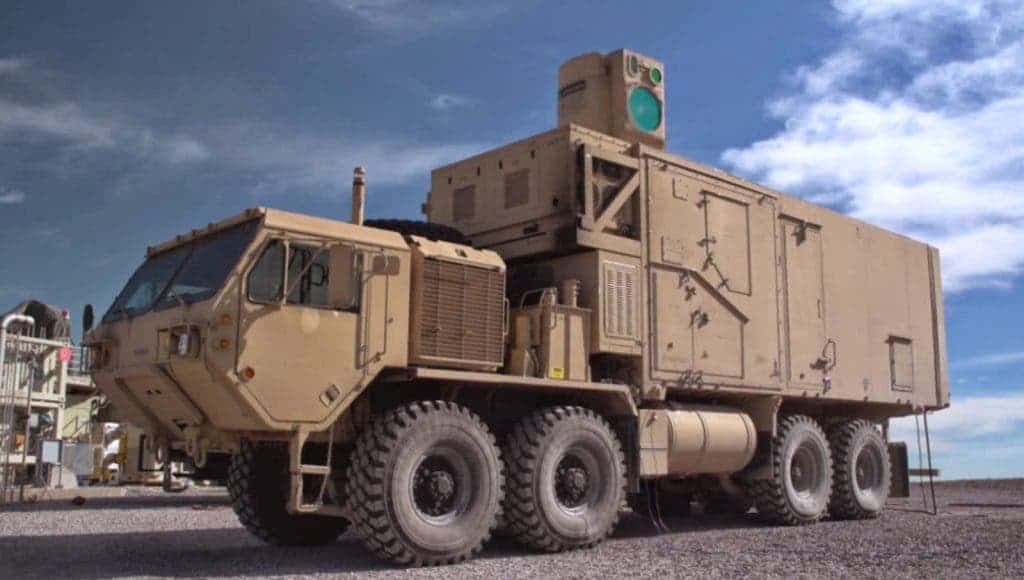A 30KW high-power laser was showcased by Lockheed Martin. The company used it to disable a vehicle more than a mile away showcasing not only the impressive power of laser weapons but also their phenomenal accuracy. To prove this, the weapon was directed specifically on the hood of the vehicle, where it fried the engine. The beam from the Advanced Test High Energy Asset, or ATHENA, is believed to be most powerful laser weapon.

“Fiber-optic lasers are revolutionizing directed energy systems,” said Keoki Jackson, Lockheed Martin chief technology officer. “We are investing in every component of the system — from the optics and beam control to the laser itself — to drive size, weight and power efficiencies.
“This test represents the next step to providing lightweight and rugged laser weapon systems for military aircraft, helicopters, ships and trucks.”

ATHENA is actually made up of several lasers. The weapon combines multiple fiber laser modules to form a single, powerful, high-quality beam. This is only a prototype, and Lockheed Martin intends on scaling it to 60 KW as agreed under the $25 million contract it signed with the US Army in early 2014. The 60 KW version is due in 2016 and expected to be mounted on an adapted army truck, essentially putting the laser on wheels. According to Next Big Future, multiple fiber lasers could be scaled to up to 500 KW, which should provide an extraordinary punch and dramatically alter the course of the battlefield. There would be no need for ammunition (just a very powerful energy source) and since laser beams travel virtually instantaneous they would provide a significant tactical advantage. Tanks, aircraft, battleships could all become seriously challenged in the future.
We’re entering a new age of warfare — the time for futuristic laser weapons is almost upon us.

Of course, the weapon’s main focus is defensive rather than offensive. Lockheed says the laser can defend against small rockets, artillery shells and mortars, small unmanned aerial vehicles, small attack boats and lightweight ground vehicles that are approximately a mile way. It’s still a bit too close for comfort, but this is just a stepping stone for even greater things to come. As fiber laser power levels increase, our systems will be able to disable larger threats and do so across greater distances.
In December 2014, the US Navy demonstrated its own laser weapon, a slightly less powerful version than Lockheed’s, standing at 30KW. Called the Laser Weapon System (LaWS), it fired from aboard the USS Ponce (LPD-15) to destroy a moving boat.






